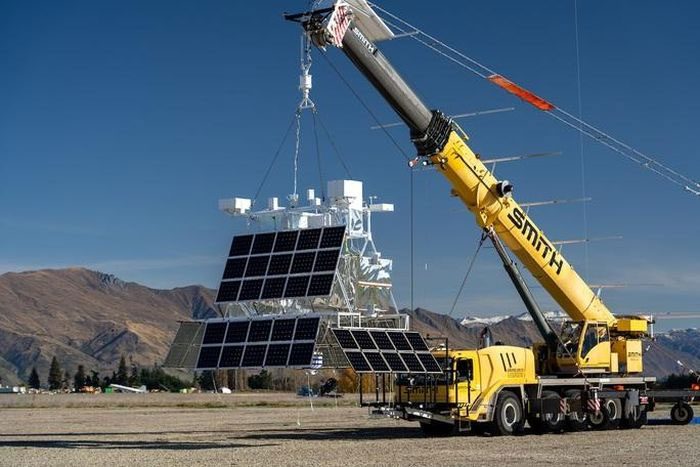The United States National Aeronautics and Space Administration (NASA) has confirmed that their EUSO-2 observatory is currently resting at the bottom of the Pacific Ocean, along with the super-pressure balloon that lifted it into the sky just a few days earlier.
EUSO-2 is a 2-ton observatory designed to detect ultra-high-energy cosmic rays from intergalactic space as they fall through the Earth’s atmosphere. Unfortunately, it was never able to fulfill this mission.

EUSO-2 observatory being transported to the launch site – (Photo: NASA).
According to Space, NASA launched the super-pressure balloon carrying EUSO-2 from the Wanaka airport in New Zealand at 12:02 PM local time on May 13.
However, shortly thereafter, the operations team discovered that the scientific balloon was leaking. They attempted to rectify the issue but were unsuccessful.
The mission regrettably ended in the Pacific Ocean at 12:45 PM local time on May 15.
This means that the entire balloon and the observatory it carried plummeted into the ocean, likely making recovery or repair impossible.
NASA further stated that they do not plan to launch a similar observatory this year.
“This is a disappointing end to the mission. We will continue to investigate the cause in order to improve super-pressure balloon technology,” said Debbie Fairbrother, Director of NASA’s Science Balloon Program.

EUSO-2 and the balloon being prepared for launch – (Photo: NASA).
This was the second super-pressure balloon launch by NASA from Wanaka airport. The first launched a different scientific instrument on April 16 and is still airborne, currently completing its fourth orbit in the Southern Hemisphere.
The previous balloon carried SuperBIT, a telescope designed to measure dark matter in galaxy clusters.
The observatories that the super-pressure balloon carries operate in the stratosphere, which is the upper layer of the Earth’s atmosphere. This allows NASA to save significantly compared to launching them into orbit, which costs several thousand dollars per pound (over 0.45 kg) of payload.


















































